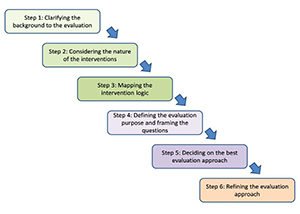Evaluating the impact of cooperative ITS (C-ITS) presents unique challenges beyond the already complex world of ITS impact evaluation, say Alan Stevens, Jean Hopkin and Simon Ball of Transport Research Laboratory, UK. They give a step by step methodology of the entire impact assessment process.

 Cooperative ITS (C-ITS) is a subset of ITS which involves communicating and sharing information between ITS-stations (such as personal devices, vehicles, roadside equipment and the back-office) to give advice or facilitate actions with the objective of improving safety, sustainability, efficiency and comfort beyond the scope of stand-alone systems. Trials on such systems are now being carried out in cities and on inter-urban corridors, with the first applications providing real-time information to vehicle occupants and collecting position data (floating car data) to assist in traffic management and support traffic information services.
Cooperative ITS (C-ITS) is a subset of ITS which involves communicating and sharing information between ITS-stations (such as personal devices, vehicles, roadside equipment and the back-office) to give advice or facilitate actions with the objective of improving safety, sustainability, efficiency and comfort beyond the scope of stand-alone systems. Trials on such systems are now being carried out in cities and on inter-urban corridors, with the first applications providing real-time information to vehicle occupants and collecting position data (floating car data) to assist in traffic management and support traffic information services.
C-ITS is, however, a relatively novel concept and field trials have been limited. Evaluating the impact of cooperative ITS (C-ITS) presents unique challenges beyond the already complex world of ITS impact evaluation. Factors include additional stakeholders, multiple communication technologies and the possibility of implementing C-ITS services in many different ways.
This article presents an overview of a general evaluation methodology for connected corridor projects which has been developed on the basis of methodologies used in European projects concerned with assessment of C-ITS and driver assistance systems. It attempts to provide a rigorous basis upon which to identify indicators and determine suitable measurement metrics.
Methodology
The methodology involves three phases: preparation; data collection and quality checking; and analysis and reporting.
Phase I – Preparation
 This uses a six-step process to determine the strategic evaluation approach. It is based on a UK approach for impact evaluations of transport interventions (The Tavistock Institute (2010). Guidance for transport impact evaluations: Choosing an evaluation approach to achieve better attribution), as summarised in Figure 1.
This uses a six-step process to determine the strategic evaluation approach. It is based on a UK approach for impact evaluations of transport interventions (The Tavistock Institute (2010). Guidance for transport impact evaluations: Choosing an evaluation approach to achieve better attribution), as summarised in Figure 1.
Step 1 involves understanding the requirements of the evaluation and the objectives of the C-ITS. The questions asked in this phase include who will use the results and what resources are available for the evaluation?
Step 2 involves considering the nature of the intervention: what C-ITS services will be provided, what are their intended benefits, which user groups will be affected and what is the likely scale of uptake? The C-ITS service will need to be defined in sufficient detail for the potential impacts to be determined so that the nature and scale of the evaluation can be designed to ensure that the impacts can be estimated with sufficient certainty. This includes defining ‘use cases’, which are the specific situations to be evaluated. For C-ITS services, these are likely to be defined by the different combinations of system architecture and communications options used to deliver the service.
In one Connected Corridor in the UK, for example, a set of priority C-ITS services was identified (Table 1). This also shows the use cases to be tested, which in this example are defined by the communications used to deliver the services.
 TrafficInfraTech Magazine Linking People Places & Progress
TrafficInfraTech Magazine Linking People Places & Progress


